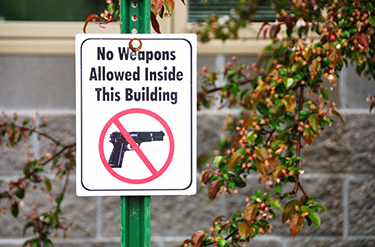Community violence intervention programs need to be based on the ideas, lessons and experiences of the neighborhood residents, said activists and researchers Tuesday during the APHA 2022 session “A Human-Centered Approach to Gun Violence Risk Assessment: Perspectives from Community-Based Violence Prevention Practitioners.”
CVI programs center hyperlocal knowledge to identify people who are most at risk for being involved in gun violence and develop targeted interventions to mitigate that risk and intervene in conflict, explained Angelica D’Souza, project manager at Northwestern University’s Corners: Center for Neighborhood Engaged Research and Science.
 While CVI programs have been around for decades, there has been a resurgence of CVI in some cities to deal with high rates of homicides, she said. The U.S. had more than 19,000 firearm homicides in 2020, a 35% increase from 2019, according to the Centers for Disease Control and Prevention. In 2020, firearms were the leading cause of death for children ages 1-19, outpacing motor vehicle-related deaths for the first time.
While CVI programs have been around for decades, there has been a resurgence of CVI in some cities to deal with high rates of homicides, she said. The U.S. had more than 19,000 firearm homicides in 2020, a 35% increase from 2019, according to the Centers for Disease Control and Prevention. In 2020, firearms were the leading cause of death for children ages 1-19, outpacing motor vehicle-related deaths for the first time.
D’Souza’s study sought insights from Chicago victim advocates and street outreach professionals — credible, hyperlocal messengers who mediate violent conflicts, respond when someone has been shot and mitigate individual risk of gun violence involvement.
When assessing risk of violent crime, some use actuarial justice tools to try to predict a person’s individual risk of future crimes. However, D’Souza’s team wanted to know how the on-the-ground gun violence prevention professionals define and assess risk. In February 2021, they conducted seven focus groups over Zoom with 29 participants who were mostly seasoned front-line staff. These included 15 street outreach workers and 12 victim advocates. They represented 19 programs and 32 neighborhoods in Chicago. The researchers also spent 250 hours observing workers in their roles.
Unlike with actuarial tools, “we found a much more complicated and dynamic landscape of risk of gun violence involvement,” she said.
The findings showed that risk depended on things such as interpersonal dynamics, volatile situations, risky behaviors, and time and place. “Individual characteristics absolutely play a role in increased risk for gun violence involvement…but it’s not static,” she said.
Known risks for violent crime include substance use, early criminal justice involvement, trouble in school, having gang-affiliated family members and living in a neighborhood with high rates of violence. However, the Corners researchers learned that risk is relational and dynamic.
Corners and their partner groups created a list of “red flags” — they use this term because front-line partners pushed back on “at risk” as inherently marginalizing. They uncovered red flags such as being known to carry a gun, trouble in school, feeling emotionally overwhelmed and rejecting services post-victimization.
Gun violence victims and offenders are often in overlapping social networks, which embeds them in risky situations and contexts, D’Souza said. One area of concern is volatile places and time periods. For example, hospitals can become explosive scenes when two opposing groups meet up in the same location. Funerals and parks are other hot spots.
“These actuarial risk assessment tools that are validated in literature certainly have a place in this continuum of care…but can’t replace this interpersonal approach that is required to safely” mitigate the risk for gun violence, she said.
How to successfully partner with the community
Before implementing community violence intervention programs, practitioners must first inform community members about their CVI options and listen and resource their choices, said Moacir Barbosa, senior director of community engagement at Health Resources in Action.
“If you want to listen to a community about their choices for what interventions should happen in their community, you’ve got to actually help them understand what they’re choosing from,” Barbosa said. “A mistake that we make very often is we put the shiny choice in front of them and pretend like they chose it.”
Partners need to invest in the neighborhood they’re working in, taking community members to local events and national conferences so they can learn about their options and build their acumen, he said. In turn, partners must also get involved in the community outside the CVI meetings, going to local events and neighborhood meetings.
His group also provides psychological first aid at the beginning of the entire process. “There are folks in the community already doing this (work), and they are deeply traumatized,” he said.
Building awareness, choosing a community violence intervention program and then developing it can take two to three years, which could frustrate some community members who want immediate interventions, he acknowledged.
It’s important to let people know up front that this takes time, he said. Make sure “you’re doing the small things you can, small interventions.” This could include supporting community events and programs, “giving some life to the things that are already in place and, if there are small acts, you can do some of those small interventions along the way.”
Photo by Steverts, iStockphoto.